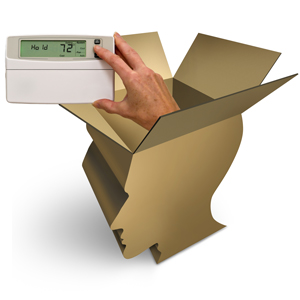It’s no secret that buildings have the greatest opportunities for energy savings. To date, this fact has primarily been addressed by energy efficiency programs that incentivize equipment or building management. But it’s getting harder to eke out additional savings when we’ve already tackled lighting, equipment, commissioning and renewables in many markets.
 What’s become more clear in the last few years (and isn’t all that surprising) is that how people interact with buildings has a significant impact on energy use. Energy Information Administration projections show that plug loads (from the computers, TVs, phones, appliances, etc. we plug into outlets in our homes and offices) are the largest and fastest growing end uses in buildings.
What’s become more clear in the last few years (and isn’t all that surprising) is that how people interact with buildings has a significant impact on energy use. Energy Information Administration projections show that plug loads (from the computers, TVs, phones, appliances, etc. we plug into outlets in our homes and offices) are the largest and fastest growing end uses in buildings.
A 2012 ACEEE paper on Smart Energy Now found that tenant businesses and office workers are responsible for about 60 percent of building energy consumption through the use of lighting, office equipment and other plug loads and data centers. Targeting behaviors is essential for energy savings.
This is where behavior based energy efficiency (BBEE) comes in. The approach uses insights from social and behavioral science in the design and execution of energy efficiency programs.
Behavior change strategies work
Think about anti-smoking campaigns. Social marketing changed public perceptions, and thus individual actions, around a particular behavior. It continues to be big in healthcare and is similarly relevant to energy.
BBEE programs focus on energy savings resulting from behavioral changes, or choices, of individuals and organizations. The idea is that people, not technology, ultimately control energy use and people respond to more than just price. So what does this look like?
For commercial office buildings, there are two avenues to help accelerate the adoption of energy saving behaviors:
- Personal spaces – turning off computers, monitors and power strips at the end of each day; adjusting monitor brightness, and using motion sensors to shut down personal work spaces when an employee leaves a desk.
- Shared spaces – turning off lights, monitors and projectors in conference rooms, turning off overhead lights and using daylight or task lights instead.
How do we get people to take these actions? Several behavioral science best practices can be applied including:
- Commitments – conveying a public or personal commitment to act differently
- Goals – determining how to follow through on those commitments
- Prompts – providing regular reminders to follow through on goals and commitments
- Feedback – sharing positive or negative feedback about follow through
- Social norms – explaining what other employees or businesses are doing to become more energy efficient and how they have been successful
- Local messengers – leveraging energy champions at each business (or floor of a business) who convey the program message
- Incentives – creating rewards for achieving goals or motivating actions
- Competition –benchmarking among peers is powerful
- Trusted advisor – ensuring there is an energy advisor from the program who can review activities and make recommendations about savings
- Celebration – celebrating collective and individual successes at major program milestones
So while all this may sound simple, and behavior should be low hanging fruit to achieve more energy savings, it’s not. Nobody wants to be told what to do or how to act. Even the term “behavior” may be sensitive. Despite significant research on behavioral science, its application to energy is relatively new. At CLEAResult, we are testing this model within our client’s energy efficiency programs to better understand what best motivates people to act. We believe this holistic approach, we call People First, Buildings Second™, can drive greater energy savings well beyond improving the efficiency of buildings themselves.
Contributing author Naomi Cole is a Program Manager at CLEAResult, the largest energy efficiency consulting firm in North America. She leads the design and delivery of behavior based energy efficiency programs. Previously she led the development and pilot phase of EcoDistricts, a framework for sustainable neighborhoods, of which behavior and community action are key tenets.

Ms. Cole, I agree that even a little bit of listening and consideration of what the client/homeowner wants to achieve with the EE we can get more people happily involved with the utility savings, home improvements, and peace of mind!
LikeLike